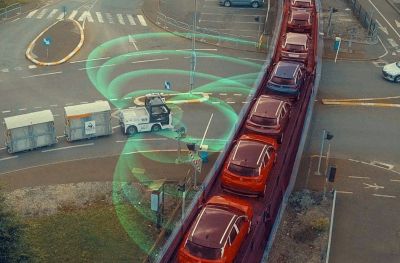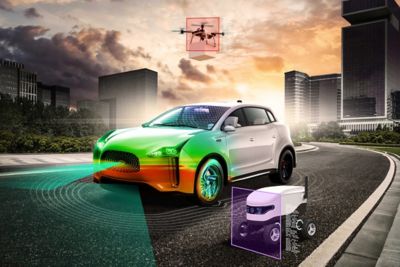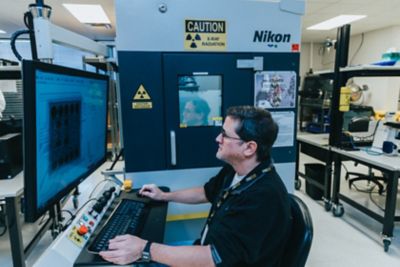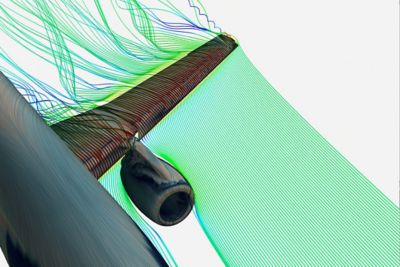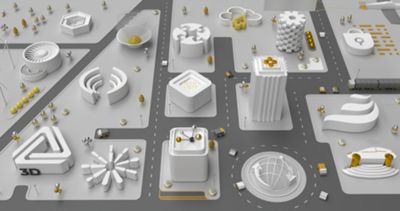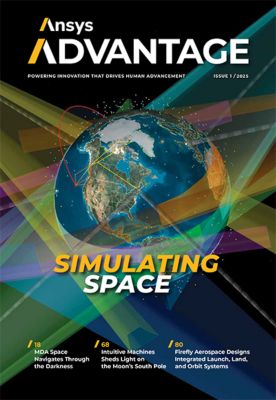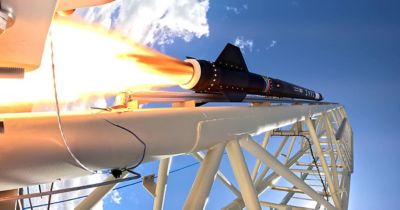-
United States -
United Kingdom -
India -
France -
Deutschland -
Italia -
日本 -
대한민국 -
中国 -
台灣
-
Ansys s'engage à préparer les étudiants d'aujourd'hui à la réussite, en leur fournissant gratuitement un logiciel de simulation.
-
Ansys s'engage à préparer les étudiants d'aujourd'hui à la réussite, en leur fournissant gratuitement un logiciel de simulation.
-
Ansys s'engage à préparer les étudiants d'aujourd'hui à la réussite, en leur fournissant gratuitement un logiciel de simulation.
-
Contactez-nous -
Carrières -
Étudiants et universitaires -
-
S'inscrire -
Déconnexion -
Espace client -
Support -
Communautés partenaires -
Contacter le service commercial
Pour les États-Unis et le Canada
+1 844.462.6797
-

From commercial satellite networks to deep-space exploration, the space industry is undergoing a transformation unlike anything in history. What was once the domain of governments and a handful of defense primes has evolved into a thriving, competitive marketplace where startups and established players alike are pushing the boundaries of what’s possible. The rapid acceleration of space innovation is driven by the convergence of digital engineering, simulation, and model-based approaches that enable organizations to develop, test, and deploy advanced space systems with unprecedented speed, efficiency, and confidence.
Ansys is at the forefront of this revolution. Across mission design, space communications, remote sensing, domain awareness, in-orbit servicing, electronics reliability, and launch and reentry systems advancements, our cutting-edge solutions are helping to create a more connected, secure, and sustainable space environment.
Designing the Future of Space Missions
The complexity of modern space missions demands a new level of precision in early-stage design and performance analysis. Pioneers like Dr. Jim Wertz, a leading figure in space mission analysis and design, emphasize the importance of leveraging advanced modeling tools to streamline decision-making and optimize mission architectures. The ability to simulate and assess the validity of trajectory designs and orbit determination results, as well as to evaluate the long-term sustainability of lunar and cislunar operations, is critical to success.
Ansys solutions, such as Systems Tool Kit (STK) and Orbit Determination Tool Kit (ODTK) software, provide an end-to-end digital engineering framework for mission design, allowing organizations to rapidly model and analyze cislunar trajectories, assess spacecraft performance, and validate navigation strategies before committing to costly physical builds. MDA, a leader in synthetic aperture radar (SAR) and space-based communications, is pioneering new approaches to persistent, all-weather Earth observation via orbital determination and other Ansys solutions. Even at the university level, students are using STK software to gain real-world experience in mission planning, preparing the next generation of space engineers to tackle the challenges ahead.

“The ability to model entire system-of-systems architectures, evaluate thousands of design alternatives in real time, and simulate mission scenarios before launch is a game-changer — one that will determine which organizations lead in this new space economy.”
— James Woodburn, Ansys Fellow, Ansys Government Initiatives
Revolutionizing Space Communications, Remote Sensing, and PNT
As space becomes increasingly congested and contested, the demand for robust communications, precise positioning, navigation, and timing (PNT), and high-resolution remote sensing is greater than ever. Companies like Wyvern are leveraging hyperspectral imaging to unlock new capabilities in environmental monitoring, agriculture, and defense. Meanwhile, PierSight is transforming ocean monitoring by providing near-real-time insights for maritime security and environmental protection. New Space Systems is simulating the effects of shock and vibration on electronics that are critical to spacecraft components and subsystem design.
Digital engineering plays a crucial role in ensuring the reliability and resilience of these space-based assets. Ansys’ multiphysics simulation solutions help organizations optimize radio-frequency (RF) and free-space optical (FSO) communication systems, mitigate thermal stress on sensitive components, and validate satellite designs for extreme launch and spaceflight conditions. Companies like Astranis are using these capabilities to bridge the digital divide, deploying innovative satellite technologies to bring high-speed internet to underserved populations around the world.
Enhancing Space Situational/Domain Awareness and On-Orbit Maneuverability
Proliferated low Earth orbit (pLEO) and increased cislunar traffic present an unprecedented level of challenge in ensuring the safety and sustainability of space operations. Space situational awareness (SSA), space domain awareness (which extends SSA to include aspects relating to characterization and intent), and on-orbit maneuverability are no longer optional; they are essential for protecting valuable assets and preventing catastrophic collisions. For example, Orbit Fab has developed space refueling services, which use simulation for fuel calculations and controlled collision planning.
At the same time, space radiation remains a formidable challenge. Ansys is working with organizations such as Space & Bean to develop cutting-edge radiation shielding solutions while our simulation tools provide mission-critical insights into the effects of electronic discharge and bulk material interactions in space environments. These innovations are essential for ensuring the long-term viability of space assets and protecting sensitive electronics from the harsh conditions beyond Earth’s atmosphere.
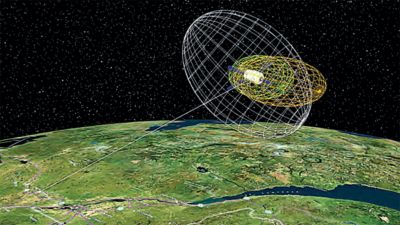
Simulation of position, navigation, and timing (PNT)
Advancing the Lunar Economy and Deep Space Exploration
The return to the Moon is no longer a distant goal — it's an imminent reality. Companies like Intuitive Machines are spearheading lunar exploration, infrastructure development, and robotic exploration that will lay the foundation for a sustained human presence beyond Earth. Meanwhile, emerging players like MaiaSpace and Stoke Space are leveraging digital engineering to develop next-generation propulsion, launch, and reusability technologies that will accelerate our journey to the Moon, Mars, and beyond.
Firefly Aerospace is another key player in this new era, tackling challenges across launch, landing, and orbital systems to support a variety of government and commercial missions. By incorporating digital engineering into every stage of development, these companies are not only reducing costs and risk but significantly increasing the likelihood of mission success.
As Wertz and other industry leaders have noted, the future of space will be defined by how effectively we integrate digital engineering and simulation into the mission life cycle. The ability to model entire system-of- systems architectures, evaluate thousands of design alternatives in real time, and simulate mission scenarios before launch is a game-changer — one that will determine which organizations lead in this new space economy.
The Digital Advantage: Securing Space for Generations To Come
Space is no longer a frontier of exploration alone; it is an integral domain for global security, economic growth, and scientific advancement. The ability to rapidly innovate, de-risk missions, and optimize performance across the ecosystem will define the leaders of tomorrow.
Simulation is the catalyst for innovation that propels human advancement in the space industry, whether you’re building new business opportunities, safeguarding our assets on Earth, or exploring the cosmos. Every groundbreaking launch and ambitious vision for space relies on meticulously planned interactions between challenging environments and complex products to ensure mission success. From mission planning to the design of spacecraft systems to postlaunch maintenance, simulation is essential.
In this issue, you’ll see how simulation is revolutionizing the space sector by empowering innovators to anticipate and mitigate risks, enhance efficiencies, and reduce costs as we embark on a new era of discovery.
To learn more, read the Simulating Space issue of Ansys Advantage magazine and get a sneak peek at the new Ansys documentary "Simulating Space."
The Advantage Blog
The Ansys Advantage blog, featuring contributions from Ansys and other technology experts, keeps you updated on how Ansys simulation is powering innovation that drives human advancement.
